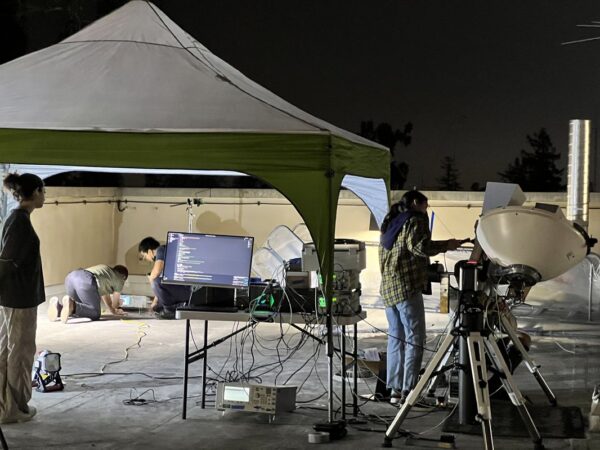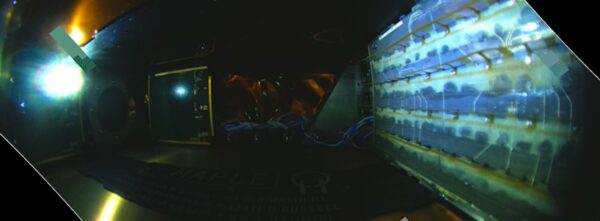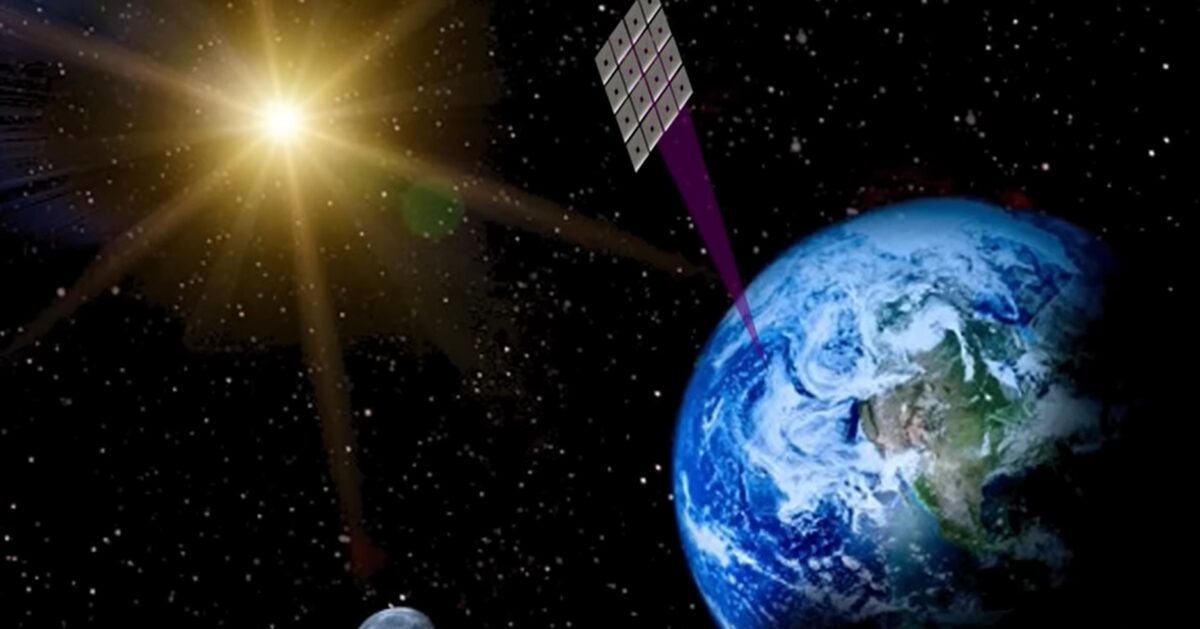From pv magazine USA
Space-based solar power has been studied for decades because, theoretically, it could tap into a virtually unlimited supply of solar energy in outer space. Caltech researchers estimate that solar from space could yield eight times more power than solar panels at any location on Earth’s surface, and in January the Caltech Space Solar Power Project (SSPD) launched into orbit a prototype to beam power to Earth.
The SSPD deployed a constellation of modular spacecraft equipped with PV to collect sunlight, convert it to electricity, and then wirelessly transmit the electricity over long distances wherever it is needed. Caltech said the technology could be useful to remote areas that do not have supportive transmission infrastructure.
Wireless power transfer was demonstrated by Microwave Array for Power-transfer Low-orbit Experiment (MAPLE), developed at Caltech. It is one of three key technologies being tested by the Space Solar Power Demonstrator (SSPD-1), the first space-borne prototype from Caltech’s SSPP.
MAPLE includes lightweight microwave power transmitters driven by custom electronic chips that were built using low-cost silicon technologies. It uses the array of transmitters to beam the energy to desired locations.
“Through the experiments we have run so far, we received confirmation that MAPLE can transmit power successfully to receivers in space,” said Ali Hajimiri, Bren Professor of electrical engineering and medical engineering and co-director of SSPP. “We have also been able to program the array to direct its energy toward Earth, which we detected here at Caltech. We had, of course, tested it on Earth, but now we know that it can survive the trip to space and operate there.”
Beaming solar from space has been studied by groups around the world for decades. Like any futuristic technology, it has its naysayers. In this case, some worry that the high energy beam will fry anything in its path or cause destruction when it fails to hit its target.
In the Caltech project, there is a transceiver array that beams the energy and two separate receiver arrays to receive it.

The signal appeared at the expected time and frequency, detected by the receiver located on the roof of the Gordon and Betty Moore Laboratory of Engineering on Caltech’s campus in Pasadena. The signal also had the right frequency shift as predicted based on its travel from orbit.
To be sure that the energy reaches its intended destination, the transmitter array uses precise timing-control elements to dynamically focus the power on the desired location using the coherent addition of electromagnetic waves.
Once the receiver arrays receive the energy, they convert it to direct current (DC) electricity, and use it to light up a pair of LEDs to demonstrate the full sequence of wireless energy transmission at a distance in space. MAPLE tested this in space by successfully lighting up each LED individually and shifting back and forth between them.
“To the best of our knowledge, no one has ever demonstrated wireless energy transfer in space even with expensive rigid structures. We are doing it with flexible lightweight structures and with our own integrated circuits. This is a first,” said Hajimiri.
The next steps for the team are to assess the performance of individual elements within the system by evaluating the interference patterns of smaller groups and measuring difference between various combinations. The researchers say the process, which can take up to six months to fully complete, will allow the team to sort out irregularities and trace them back to individual units, providing insight for the next generation of the system.
“The flexible power transmission arrays are essential to the current design of Caltech’s vision for a constellation of sail-like solar panels that unfurl once they reach orbit,” said Sergio Pellegrino, Joyce and Kent Kresa professor of aerospace and civil engineering and co-director of SSPP.

The SSPP team also has to design solar power energy systems that are lightweight and flexible, according to Harry Atwater, one of the principal investigators of the project. Individual SSPP units will fold up into packages about 1 cubic meter in volume and then unfurl into flat squares about 50 meters per side, with solar cells on one side facing toward the sun and wireless power transmitters on the other side facing toward Earth.
“In the same way that the internet democratised access to information, we hope that wireless energy transfer democratises access to energy,” said Hajimiri. “No energy transmission infrastructure will be needed on the ground to receive this power. That means we can send energy to remote regions and areas devastated by war or natural disaster.”
In addition to the support received from the Brens, Northrop Grumman Corporation also provided Caltech USD 12.5 million over three years through a sponsored research agreement between 2014 and 2017 that supported for the development of technology and advancement of science for the project.
This content is protected by copyright and may not be reused. If you want to cooperate with us and would like to reuse some of our content, please contact: editors@pv-magazine.com.









By submitting this form you agree to pv magazine using your data for the purposes of publishing your comment.
Your personal data will only be disclosed or otherwise transmitted to third parties for the purposes of spam filtering or if this is necessary for technical maintenance of the website. Any other transfer to third parties will not take place unless this is justified on the basis of applicable data protection regulations or if pv magazine is legally obliged to do so.
You may revoke this consent at any time with effect for the future, in which case your personal data will be deleted immediately. Otherwise, your data will be deleted if pv magazine has processed your request or the purpose of data storage is fulfilled.
Further information on data privacy can be found in our Data Protection Policy.